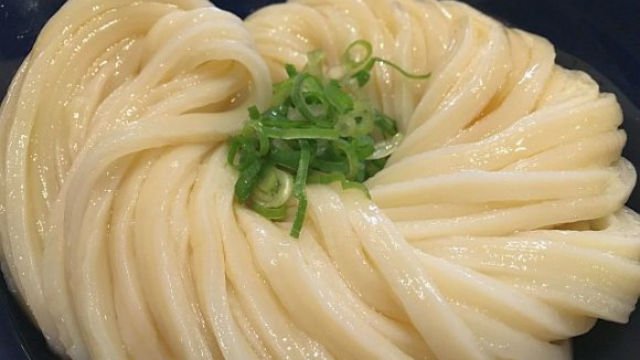Shikoku Food: From Sanuki Udon to Tokushima Ramen and Beyond
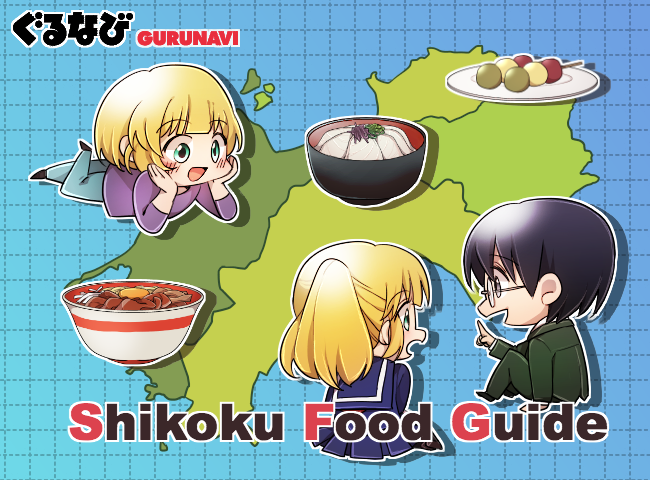
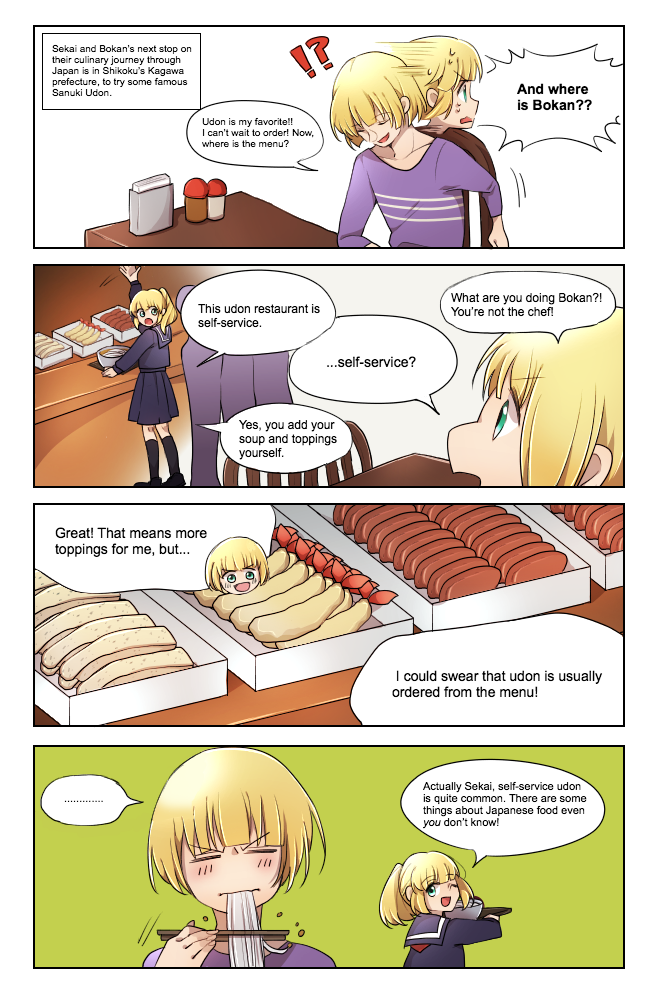
The smallest of Japan’s four main islands, Shikoku is a region where the mild climate, bountiful nature, kind locals, and slow pace of life create a pleasant atmosphere of tradition and country charm. Bordered by the Seto Inland Sea to the north and the Pacific Ocean to the south, Shikoku was accessible only by ferryboat until 1988, adding to the impression of the island being far removed from the busy pace of Tokyo and Osaka.
The name “Shikoku”, meaning “four provinces”, refers to its four prefectures—Tokushima, Kagawa, Kochi, and Ehime. Due to the island’s mountainous geography, the four provinces were fairly isolated from each other, giving rise to a unique local food culture in each area. Here are 8 dishes that make Shikoku food remarkable, and worth a trip to the area to experience!
Taste the Best of Shikoku Food with These 8 Picks
Sanuki Udon

Sanuki Udon noodles from Kagawa prefecture are possibly the most famous of Shikoku’s regional foods, and are one of Japan’s three most famous types of udon. Kagawa—dubbed “the udon prefecture”—is not only home to more than 900 udon shops, but has a higher udon noodle consumption per capita than anywhere in Japan. The local Sanuki Udon is a characteristically thick and springy noodle, made of a mixture of white wheat flour, salt, and water. The noodles can be eaten various ways—cold with a dipping sauce, or in a hot broth with toppings such as bonito flakes, sesame seeds, grated daikon, and sliced green onions.
Tokushima Ramen
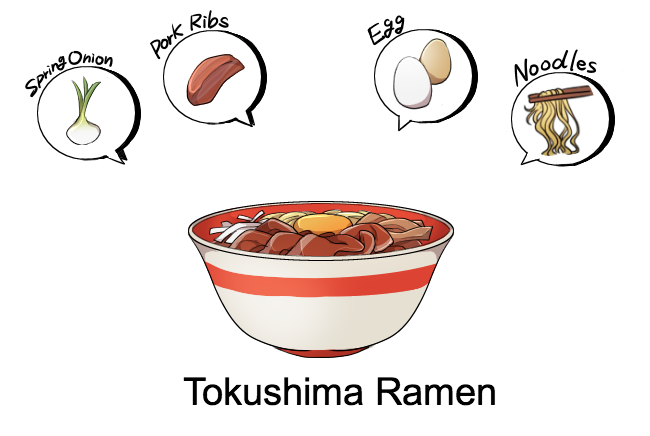
Tokushima prefecture is famous for its unique style of ramen made with pork bones and sweet soy sauce. Tokushima Ramen comes in shades of dark brown, yellow and white, depending on whether pork, chicken or vegetable broth is used, and whether the soy sauce added is dark or light. Bowls of the broth and soft, thin noodles are served topped with slices of seasoned pork ribs, green onions, and a raw egg that cooks in the hot soup. Uniquely, Tokushima Ramen is often served well with a side of rice—recent years have even seen a new dish called Tokushima-don become popular, a bowl of rice topped with Tokushima Ramen ingredients.
Katsuo no Tataki
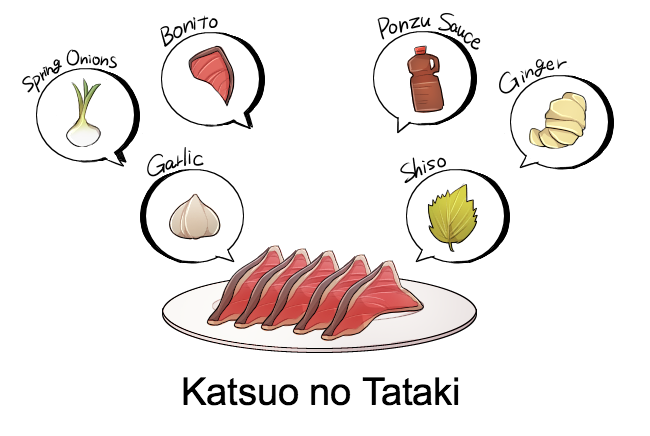
Kochi prefecture, facing the Pacific Ocean, is famous for its katsuo (also known as bonito or skipjack tuna), a fish highly prized in Japan. The area has a number of traditional katsuo dishes, the most famous of which being “Katsuo no Tataki”. To prepare the dish, a katsuo fillet is wrapped in straw and seared until it’s golden on the outside but still rare in the center, then sliced and served with condiments such as ginger, Japanese leek, shiso (perilla) leaves, garlic, and ponzu (a dressing of citrus and soy sauce).
Botchan Dango
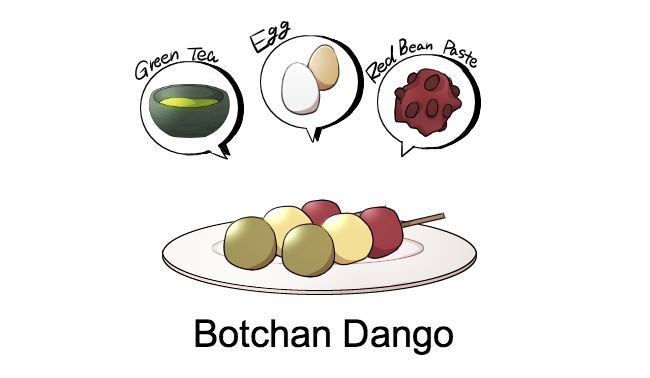
Botchan Dango is a traditional Japanese sweet from Ehime that was named after the 1906 novel Botchan, in which this local delicacy first gained national attention. Botchan Dango consists of three mochi (rice flour dumplings) on a bamboo skewer. The dumplings are wrapped in bean paste flavored with different items that give them their three distinctive colors: one red dumpling flavored with red adzuki beans, one yellow dumpling flavored with eggs, and one green dumpling flavored with green tea.
Imotaki
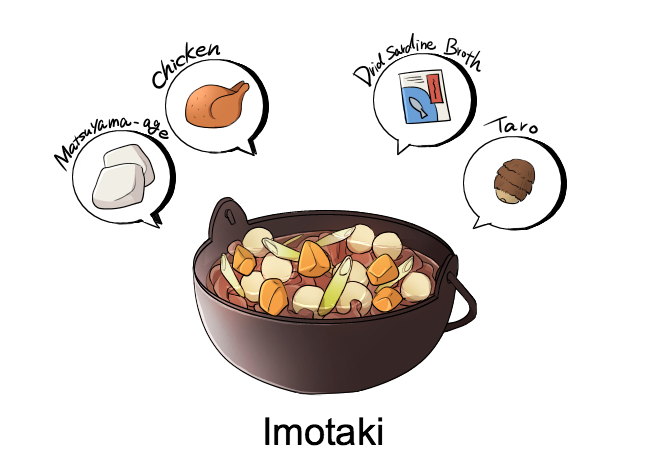
Imotaki is an autumn root stew enjoyed in Ehime prefecture. It’s made with taro root, chicken, and matsuyama-age, a kind of deep-fried tofu similar to the abura-age fried tofu pouches used for inari sushi, but crispy and very rich in oil. The ingredients are simmered together in a flavorful iriko dashi (dried sardine stock) with other root vegetables until they absorb the stock’s flavor. Imotaki stew is traditionally eaten outdoors beside fields and rivers at autumn moon-viewing parties called “tsukimi”.
Uwajima Tai Meshi
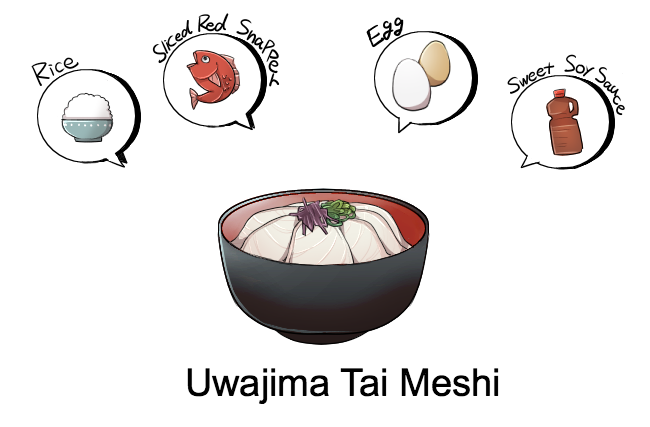
Tai, or red snapper, is an exquisite-tasting fish that has been used as a symbol of celebration in Japan since ancient times. In the Uwajima region of Ehime, locals enjoy a dish called Tai Meshi (red snapper and rice), which is regarded as the “soul food” of Ehime. Tai Meshi consists of a bowl of cooked rice topped with red snapper sashimi that has been dipped in raw egg yolk mixed with a sweet sauce. The red snapper in the Ehime region is caught in the Seto Inland Sea, which gives it notably firm flesh and an exceptional flavor that goes excellently with the creamy egg yolk and sweet sauce.
Sobagome Zosui
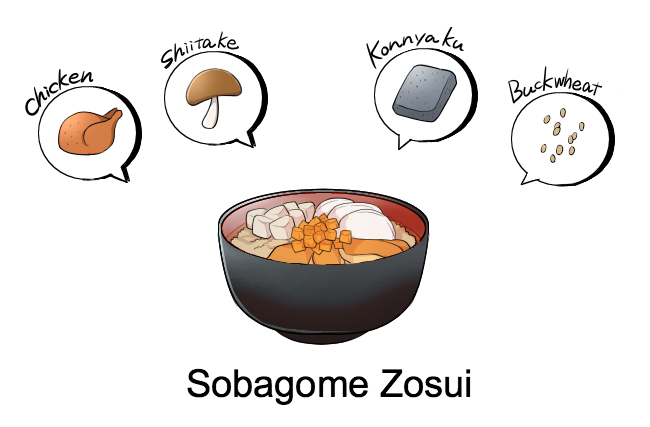
Zosui is a style of Japanese porridge made with vegetables and plenty of rice. In Tokushima prefecture, where the land and climate are not well suited to rice farming but buckwheat is an essential local crop, residents enjoy a variation of zosui made with buckwheat grain instead—“sobagome zosui”. It’s made by boiling, drying, and husking sobagome (buckwheat grain), and cooking the grain together with shiitake mushrooms, chicken, and konnyaku (yam cake) to make a thick porridge.
Honetsuki-dori
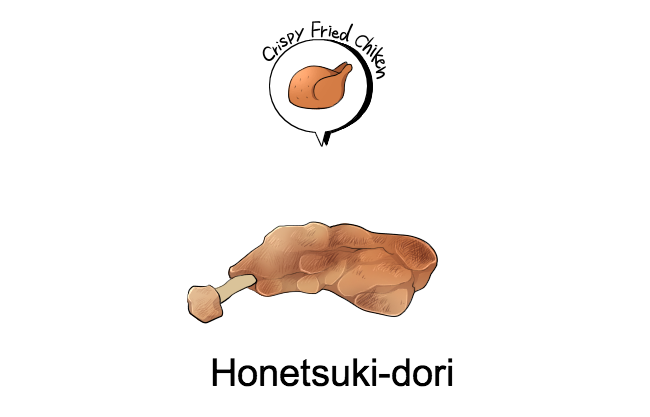
Honetsuki-dori is fried bone-in chicken, is popular dish in Kagawa-area izakaya pubs. The chicken is seasoned with salt and pepper and fried until its skin becomes crispy, then served over rice. The dish is usually served with a pair of kitchen shears, so the chicken can be easily cut into bite-sized pieces. Honetsuki-dori can be enjoyed two ways: made with a mature chicken or a young pullet. The mature chicken is leaner and more muscular with a firm, chewy texture and richly flavored meat, while the young pullet is plumper with tender, juicy meat and a higher fat content. Both kinds of chicken go excellently with beer.
Shikoku Food Offers Something for Everyone
Whether you visit Shikoku for the relaxed lifestyle, idyllic farms or picturesque fishing villages, be sure to sample its famous Sanuki Udon, Tokushima Ramen, and other delicious Shikoku food. You can browse the dishes and restaurants of each its four prefectures on the Gurunavi website - Ehime, Kagawa, Kochi and Tokushima restaurants.




